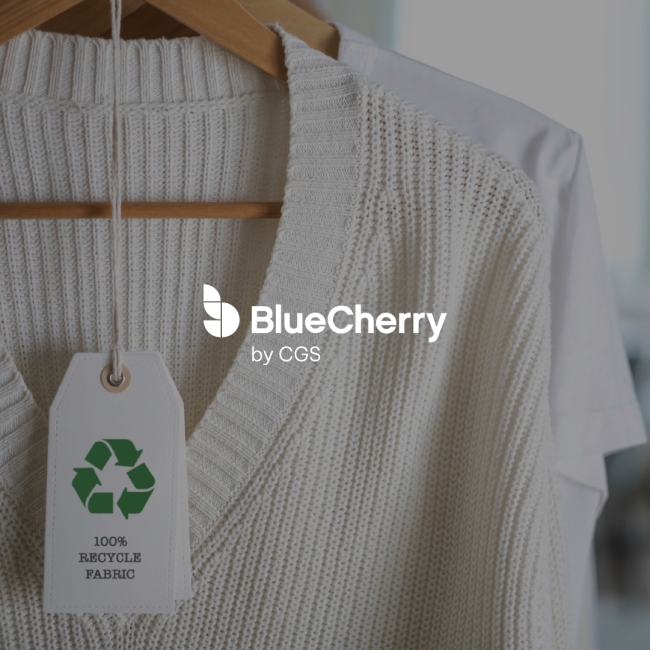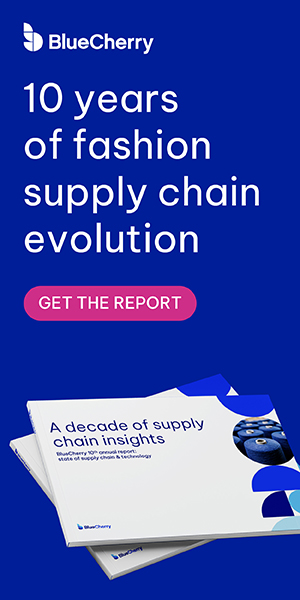Integrating ESG into Fashion Supply Chains: a Comprehensive Approach

The fashion industry is undergoing a seismic shift. Sustainability is no longer a branding exercise—it’s a legal, operational, and financial imperative. With fashion accounting for 8–10% of global greenhouse gas emissions, exceeding the emissions from all international flights and maritime shipping combined, brands are under mounting pressure to take real action.
For years, voluntary sustainability initiatives have failed to deliver the necessary impact. Now, governments and regulators are stepping in. The EU’s Corporate Sustainability Reporting Directive (CSRD) and US SEC’s climate disclosure rules are setting a new standard for ESG transparency.
In February 2024, the EU Commission announced a reduction in the scope of Corporate Sustainability Reporting Directive (CSRD) requirements, easing the compliance burden for smaller companies and delaying some elements of climate risk disclosure. However, this is not a rollback on sustainability commitments.
Instead, this adjustment highlights that collecting primary supply chain data is the highest priority for driving meaningful progress. Rather than pushing brands to meet complex reporting standards immediately, EU regulators are focusing first on ensuring companies have robust data collection mechanisms in place—without which sustainability claims are meaningless.
For fashion brands, this means moving beyond pledges and marketing claims. They must integrate ESG directly into their supply chains, leveraging technology, real-time data, and impact assessments to stay ahead of evolving regulations.
Why ESG Integration is Critical for Fashion Brands
Sustainability in fashion is no longer about “doing good”—it’s about business survival. Companies that fail to comply with ESG regulations risk legal penalties, reputational damage, and loss of market access. Those that embrace ESG, however, gain competitive advantages, improve operational efficiency, and future-proof their businesses.
1. Environmental Impact: The Push for Product Lifecycle Assessments
One of the biggest challenges in sustainable fashion is quantifying impact. Without accurate, standardized calculations, brands can’t make meaningful progress.
- The EU-sponsored Product Environmental Footprint Category Rules (PEFCR) are likely to become a regulatory requirement, setting a standardized lifecycle assessment (LCA) methodology for measuring fashion’s environmental footprint across the full lifecycle of a product. However, the accuracy of these calculations depends entirely on primary data from suppliers—from raw material sourcing to energy use in manufacturing and transportation emissions – and from the intended design strategy, use and reuse during its lifespan, and end of life disposal and recycling.
- Without real-time supplier data, brands risk failing compliance with future sustainability regulations. Digital ESG platforms that integrate automated data collection, data verification, and AI-driven impact assessments will be crucial in making this process manageable.
2. Social Impact: Ethical Sourcing is No Longer Optional
The industry continues to struggle with exploitative labor practices, from child labor to unsafe working conditions. Recent investigations have exposed human rights violations in factories supplying major brands. Even if these factories represent a small part of a brand’s supply chain, the reputational damage can be significant.
- Regulators and consumers expect transparency. Brands need full visibility across their Tier 1 (garment manufacture & processing), Tier 2 (fabric & components), Tier 3 (material processing), and Tier 4 (raw material extraction) suppliers to identify and eliminate unethical practices.
- Supplier accountability is key. Many brands rely on third-party audits, but these are not enough without real-time data tracking.
3. Governance: The End of Greenwashing
Governance is at the heart of ESG. Companies can no longer make unverified sustainability claims. Regulatory bodies, investors, and watchdog organizations are demanding proof.
- EU sustainability regulations are becoming stricter. Although some reporting requirements have been temporarily relaxed, the long-term goal remains clear:
- Standardized impact calculations (such as PEFCR – Product Environmental Footprint Category Rules)
- Mandatory carbon tracking across supply chains
- Full transparency of materials, labor, and waste management
- Extended Producer Responsibility (EPR) for recycling of products and materials at end of life.
- Mandatory tools and data, such as Digital Product Passports, to provide ‘evidence,’ facilitate a Circular Economy, and support brands’ responsibilities for their products’ end of life (EPR).
- Greenwashing penalties are increasing. Brands that fail to provide verifiable data face legal risks, fines, and consumer backlash.
Regulatory Outlook: What’s Coming Next?
With regulations tightening and expectations rising, brands can no longer afford to take a reactive approach to ESG. Understanding what’s next in sustainability regulations will be critical for long-term compliance and business resilience.
- 2025-2026: Companies subject to CSRD regulations must begin ESG reporting. Starting in 2027, expanded supply chain due diligence laws will require brands to track supplier sustainability data with greater accuracy and transparency.
- 2027: Digital Product Passports will be enforced for all new Textiles products introduced into the EU markets.
- 2027+: The Product Environmental Footprint Category Rules (PEFCR) are expected to be integrated into EU regulations, requiring primary data for impact assessments.
- Ongoing: EPR schemes and Digital Product Passport (DPP) requirements will continue evolving, expanding brands’ responsibilities for product end-of-life tracking and circularity efforts.
The ESG Challenges in Fashion Supply Chains
The pressure is mounting for brands to move from broad commitments to measurable action. However, integrating ESG into a global, multi-tiered supply chain presents serious challenges—from fragmented data collection to supplier non-compliance.
1. Complex, Multi-Tiered Supply Chains
Fashion brands often don’t own their factories. They rely on multiple suppliers, subcontractors, and raw material sources, making it difficult to collect consistent, reliable ESG data.
2. Lack of Standardized Data for Impact Assessments
Brands need primary data from suppliers to calculate environmental impacts accurately. Many still rely on estimated or secondary data, which won’t meet future regulatory standards like PEFCR.
3. Supplier Non-Compliance
Many suppliers lack incentives to comply with ESG policies unless brands provide clear requirements and support. Without digital tracking, identifying non-compliant suppliers is almost impossible.
4. Limited Technology Adoption
Many brands still rely on manual ESG data collection, leading to inconsistencies, errors, and inefficiencies. Without the right tools, compliance becomes a resource-intensive challenge.
How Fashion Brands Can Embed ESG Into Their Supply Chains
Step 1: Set Clear ESG Goals & Metrics
Brands need to align ESG objectives with industry standards like CSRD, GHG Protocol, and PEFCR. This includes:
- Carbon footprint tracking from raw materials to finished products.
- Water consumption and textile waste monitoring.
- Supplier labor rights compliance audits.
Step 2: Use Technology to Track ESG Data
Fashion brands must move away from manual sustainability tracking and adopt automated, real-time ESG data collection.
AI-driven compliance tracking automates regulatory reporting, ensuring that ESG data remains accurate and up to date with evolving CSRD, PEFCR, and DPP requirements. With AI-powered supply chain monitoring, brands can identify data anomalies, flag supplier non-compliance, and predict sustainability risks before they escalate.
- Supply Chain Mapping: Digital platforms provide end-to-end visibility of suppliers, materials, and production locations.
- Automated ESG Data Collection: Notifications, reminders, and exception reporting highlight supply chain risks in real-time.
- Digital Product Passports: Brands can track material origins, production processes, and labor conditions, ensuring verified sustainability claims.
Step 3: Establish Supplier Collaboration
Brands must work directly with suppliers to enforce ESG standards and support compliance. Key strategies include:
- Requiring third-party certifications (e.g., GOTS, GRS, OEKO-TEX).
- Joint sustainability initiatives, such as closed-loop manufacturing and textile recycling programs.
- Supply chain collaboration platforms to enable real-time ESG data sharing.
Step 4: Implement ESG Audits & Reporting
Ongoing compliance monitoring is essential, especially as new Extended Producer Responsibility (EPR) regulations and Digital Product Passport (DPP) requirements take shape. To prepare, brands should:
- Ensure full lifecycle tracking of their products, including material sourcing, usage, and end-of-life disposal.
- Adopt Digital Product Passports (DPPs) that provide consumers, recyclers, and regulators with verifiable data on product sustainability, and provide the product usage and end of life data required by EPR.
- Develop take-back and recycling programs now, so they are prepared to comply with future EPR regulations.
Examples of ESG Leadership
A global luxury brand adopted Digital Product Passports (DPPs) to provide consumers with full transparency about material sourcing, ethical labor practices, and sustainability credentials. This resulted in strengthened consumer trust and compliance with EU traceability requirements.
Another example is a leading fast-fashion retailer who launched take-back and textile recycling programs, which created a closed-loop production system. The result? Lower textile waste, improved consumer perception, and enhanced brand reputation.
The Time to Act is Now
The fashion industry cannot afford to delay ESG integration. While some regulatory reporting requirements have been temporarily relaxed, it’s clear that supply chain data collection is the top priority for regulators. Brands that act now will lead the industry in sustainability, compliance, and market trust.
With increasing regulatory scrutiny and rising consumer expectations, brands that take action today will lead the fashion industry tomorrow. Will you be one of them?
Book a demo with us today to see how our ESG platform simplifies supply chain sustainability tracking, integrates seamlessly with PLM and ERP systems, and ensures compliance with evolving regulations. Visit us at BlueCherry.com for more.

